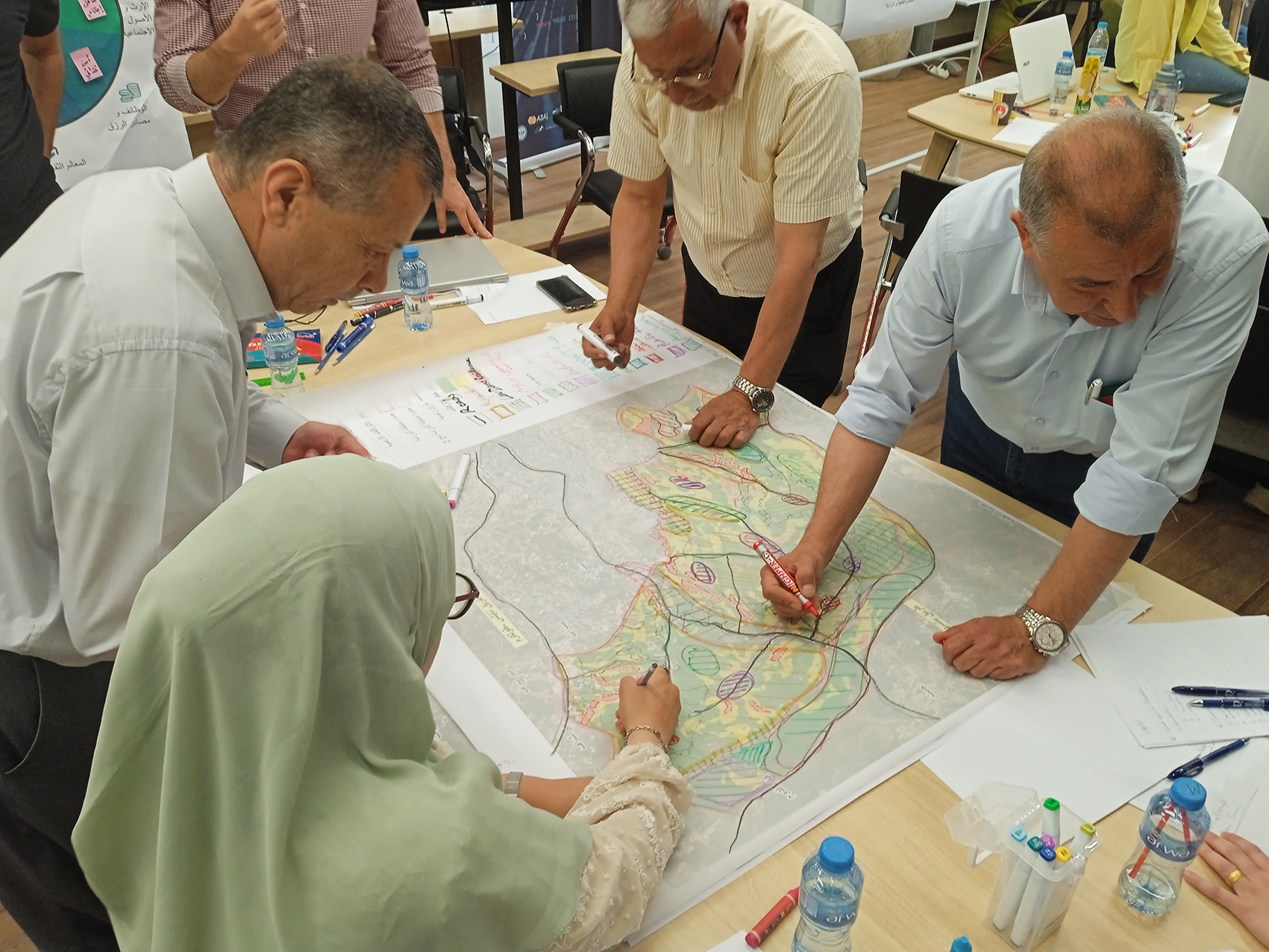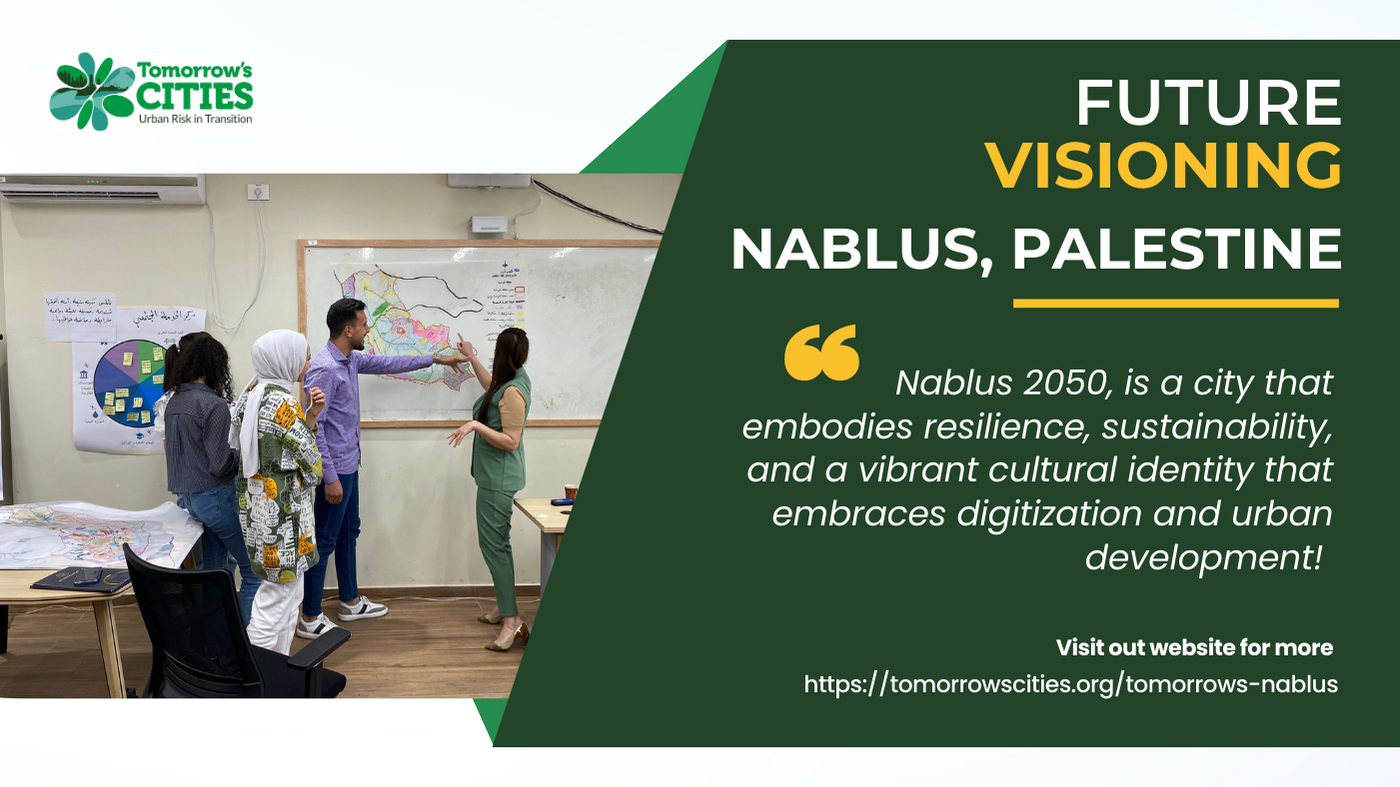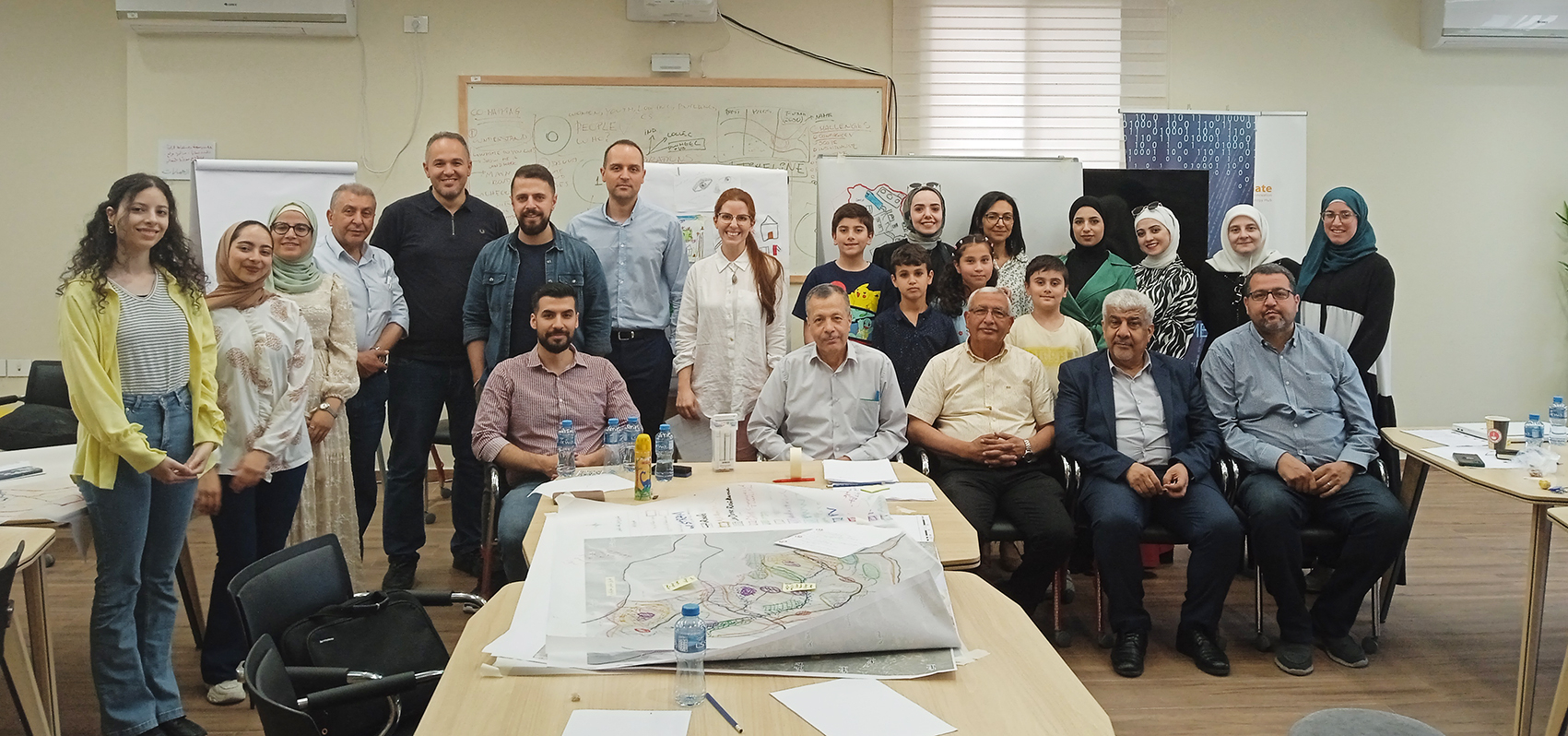
The Urban Planning and Disaster Risk Reduction Center of Nablus, An-Najah National University, Palestine, has successfully completed the Future Visioning stage of the Tomorrow's Cities Decision Support Environment. The activities were conducted in collaboration with an international team from Tomorrow's Cities, alongside the participation of the Palestinian team and a diverse group of representatives from the local community.
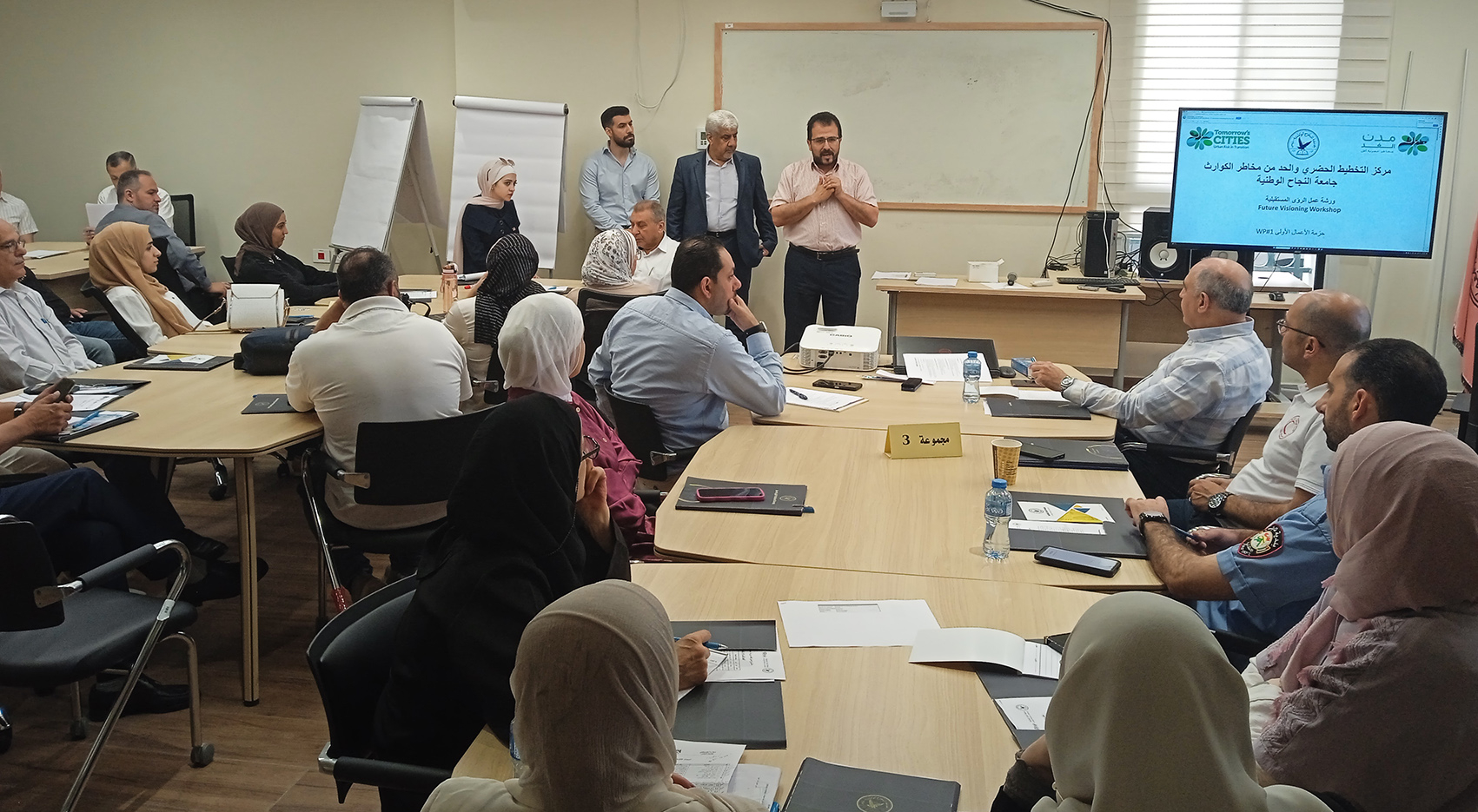
Prof. Saed Al-Khayyat, Coordinator of the local University Scientific Centers, who inaugurated the event, highlighted the crucial role played by Tomorrow’s Cities in disseminating the latest global knowledge and scientific findings, as well as their practical application on the ground. Following his speech, Prof. Jalal Dabeek, Leader of the Tomorrow’s Cities Palestinian Team and Director of the Urban Planning and Disaster Risk Reduction Center, stressed the importance of transitioning from a reactive approach to proactive measures. Professor Dabeek elucidated that the primary objective of this project is to encourage proactive decision-making in order to mitigate the risks associated with potential future disasters over the next three decades.
In its turn, Dr. Jamal Dabbeek, part of Nablus’s team and an expert in disaster risk modeling, raised several important points during the discussion. He posed questions regarding the potential repercussions if the earthquake that occurred in 1927 were to happen again in present-day Nablus. Furthermore, he pondered the consequences of a similar earthquake recurring in the year 2050. Dr. Dabbeek emphasized the need to evaluate the extent of destruction that would transpire and the magnitude of losses in terms of both lives and property. He also stressed the significance of reviewing the potential outcomes if the current planning practices were to continue in the upcoming years. Dr. Dabbeek emphasized the importance of comparing this scenario with the best possible one, considering the implementation of decisions that adhere to the standards of disaster risk reduction.
Additionally, Dr. Karim Al-Jawhari from the University College London (UCL) presented an analysis of Nablus maps, particularly focusing on the expansion areas currently under study. He highlighted that more than sixty percent of the future city's projected areas remain undeveloped. This observation underscores the opportunity to be proactive and prepared in these areas.
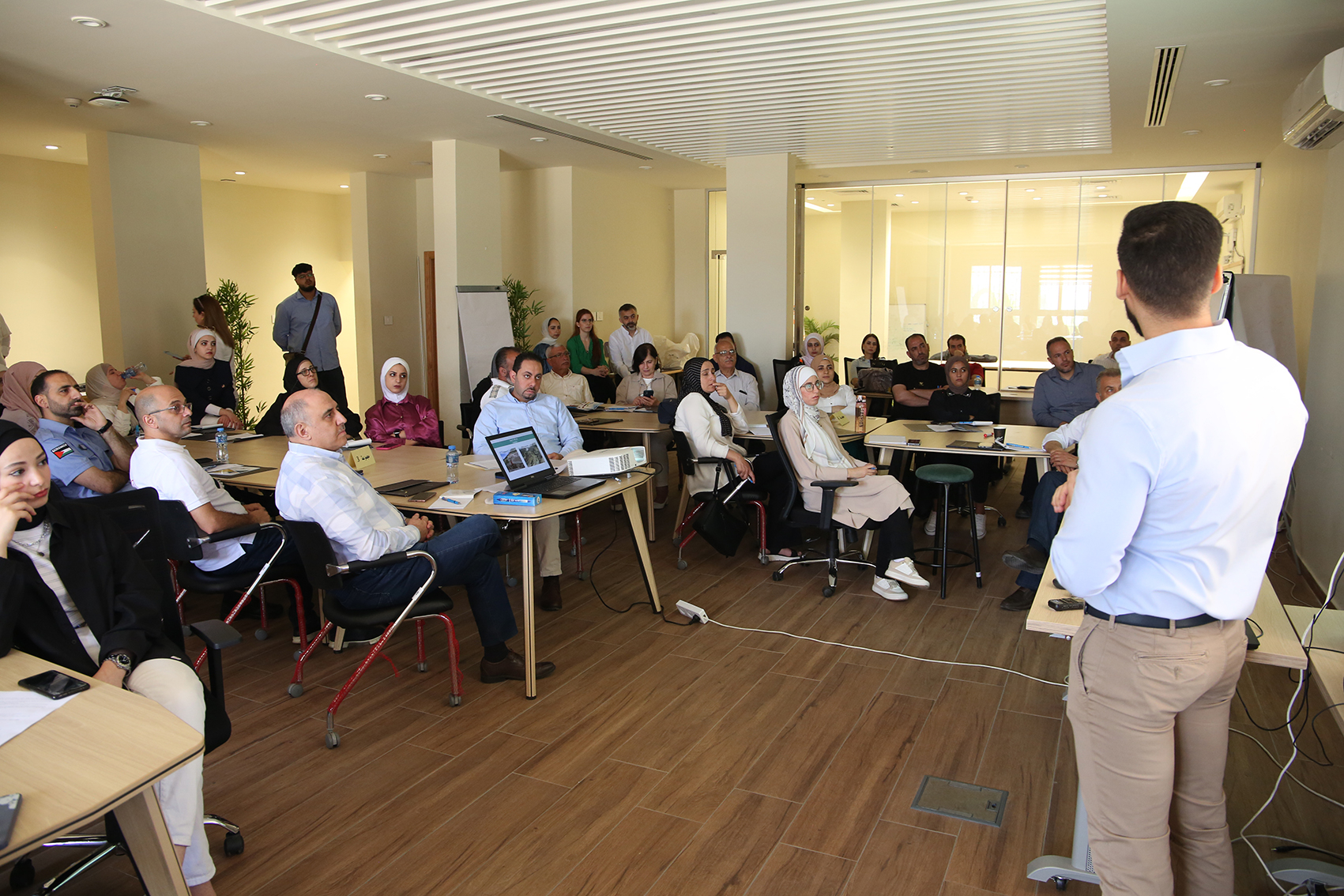
Future Visioning in Nablus was developed in two stages. The first stage focused on training the Palestinian team and in conducting a two-day experimental simulation. The second stage, also spanning two days, involved inviting representatives from various sectors of the local community. These representatives were carefully selected to ensure the inclusion of all segments of society in Nablus, such as the elderly, women, youth, people with disabilities, residents of buildings, and representatives of civil society organizations, among others. Notably, the Palestinian team took a pioneering step by inviting a community group of children aged seven to twelve, who participated alongside adults in the workshop but with outputs tailored to their age group.
Within each community group, brainstorming sessions and dialogues took place, facilitated by a designated team member. A notetaker was responsible for documenting all the observations and opinions expressed, while a planner translated ideas into map drawings that enable participants to visualize different future visions for areas yet to be developed. This collaborative process allows exploring options and policies that will guide sustainable development in the future. Adding to that, technical information on the risks facing the expansion areas was collected and will be incorporated into subsequent stages of the TCDSE and fed into models that simulate different development visions, enabling the assessment of potential risk scenarios.
